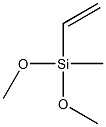Vinylbenzyl chloride
- CAS NO.:30030-25-2
- Empirical Formula: C9H9Cl
- Molecular Weight: 152.62
- MDL number: MFCD00051362
- EINECS: 250-005-9
- SAFETY DATA SHEET (SDS)
- Update Date: 2025-02-26 21:25:56

What is Vinylbenzyl chloride?
Chemical properties
Vinylbenzyl chloride (VBC) is also called (chloromethyl)ethenylbenzene or α-chloromethylstyrene. It is a difunctional monomer with both a polymerizable double bond and a benzylic chlorine, and is an isomeric mixture made by the chlorination of VT. VBC has a high boiling point(98.9 ℃ at 1.3 kPa) and low flammability.
The Uses of Vinylbenzyl chloride
Vinylbenzyl Chloride can be used for acrylic emulsion pressure-sensitive adhesive composition.
The Uses of Vinylbenzyl chloride
Vinylbenzyl chloride can be used as organic synthesis intermediate and pharmaceutical intermediate, mainly used in laboratory research and development process and chemical production process.
The Uses of Vinylbenzyl chloride
Vinylbenzyl chloride can be transformed into a high molecular mass homopolymer, will copolymerize with many other monomers, and is used as comonomer in a variety of specialty plastics. It is also possible to carry out reactionson the chloromethyl group, either before or after polymerization.
Properties of Vinylbenzyl chloride
| Melting point: | -30°C |
| Boiling point: | 229 °C(lit.) |
| Density | 1.074 g/mL at 25 °C(lit.) |
| vapor density | 5.3 (vs air) |
| vapor pressure | 1 mm Hg ( 56.1 °C) |
| refractive index | n |
| Flash point: | 221 °F |
| storage temp. | -20°C |
| solubility | Acetonitrile (Slightly), Chloroform (Slightly) |
| Water Solubility | 24.6mg/L at 20℃ |
| BRN | 2204384 |
| Stability: | Air Sensitive, Light Sensitive |
| CAS DataBase Reference | 30030-25-2(CAS DataBase Reference) |
| EPA Substance Registry System | Benzene, (chloromethyl)ethenyl- (30030-25-2) |
Safety information for Vinylbenzyl chloride
| Signal word | Danger |
| Pictogram(s) |
 Skull and Crossbones Acute Toxicity GHS06  Environment GHS09 |
| GHS Hazard Statements |
H302:Acute toxicity,oral H315:Skin corrosion/irritation H317:Sensitisation, Skin H319:Serious eye damage/eye irritation H410:Hazardous to the aquatic environment, long-term hazard |
| Precautionary Statement Codes |
P273:Avoid release to the environment. P280:Wear protective gloves/protective clothing/eye protection/face protection. P301+P312:IF SWALLOWED: call a POISON CENTER or doctor/physician IF you feel unwell. P305+P351+P338:IF IN EYES: Rinse cautiously with water for several minutes. Remove contact lenses, if present and easy to do. Continuerinsing. |
Computed Descriptors for Vinylbenzyl chloride
| InChIKey | SLBOQBILGNEPEB-UHFFFAOYSA-N |
Vinylbenzyl chloride manufacturer
Krystal Tech
Related products of tetrahydrofuran








You may like
-
 Vinylbenzyl chloride CAS 30030-25-2View Details
Vinylbenzyl chloride CAS 30030-25-2View Details
30030-25-2 -
 Vinylbenzyl chloride CAS 30030-25-2View Details
Vinylbenzyl chloride CAS 30030-25-2View Details
30030-25-2 -
 106-43-4 Para Chloro Toluene (PCT) 99.00%View Details
106-43-4 Para Chloro Toluene (PCT) 99.00%View Details
106-43-4 -
 Pyrrolidine 99.00%View Details
Pyrrolidine 99.00%View Details
123-75-1 -
 88-82-4 2,3,5-Triiodobenzoic Acid 99.00%View Details
88-82-4 2,3,5-Triiodobenzoic Acid 99.00%View Details
88-82-4 -
 Methyl-2-Methoxy-5-Sulfamoyl Benzoate 99.00%View Details
Methyl-2-Methoxy-5-Sulfamoyl Benzoate 99.00%View Details
33045-52-2 -
 Orthochlorobenzaldehyde (2-Chlorobenzaldehyde) 89-98-5 99.00%View Details
Orthochlorobenzaldehyde (2-Chlorobenzaldehyde) 89-98-5 99.00%View Details
89-98-5 -
 12029-98-0 99.00%View Details
12029-98-0 99.00%View Details
12029-98-0